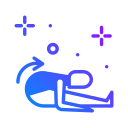Chosen theme: The Role of Yoga in Reducing Post-Exercise Soreness. Ease tender muscles, quiet the nervous system, and turn your cooldown into a gentle ritual that speeds recovery and keeps training joyful.
Microtears, Inflammation, and the 48-Hour Peak
DOMS often peaks between 24 and 48 hours after unfamiliar or intense effort. Gentle yoga promotes circulation, reducing stiffness while respecting healing tissues. Notice how light movement, not forced stretching, restores comfort without stealing tomorrow’s strength.
Switching Gears: Parasympathetic Activation
Slow breathing and supported postures cue the parasympathetic system, lowering heart rate and tension. This shift helps nutrients reach sore areas and calms the mind. Try a five-minute breath-led sequence after workouts, then share whether your evening soreness felt different.
What Research Suggests About Stretching and Soreness
Small studies show gentle stretching and yoga can improve perceived soreness and range of motion, especially when combined with breathwork. Results vary, but the trend is encouraging. Test it yourself for two weeks and comment with what changed—mobility, mood, or sleep.
Box Breathing to Smooth the Edges
After intervals, sit tall and inhale for four, hold four, exhale four, hold four—repeat for three minutes. This simple cadence steadies your system, melts jaw and shoulder tightness, and prepares your body for soft stretching without overstimulating fatigued muscles.
Longer Exhales, Softer Muscles
Aim for a 1:2 inhale-to-exhale ratio during cooldown. The extended exhale invites relaxation and eases guarding around sore areas. Try five rounds, then a gentle forward fold. Tell us if your hamstrings feel safer and less reactive when your breathing leads the way.
Nasal Breathing to Finish Strong, Not Stiff
Close with two minutes of nasal breathing in a comfortable seat. Nasal airflow humidifies, filters, and naturally slows the breath, encouraging calm. Pair it with a supported twist, then note in your training log how your evening walk or next day warm-up feels.
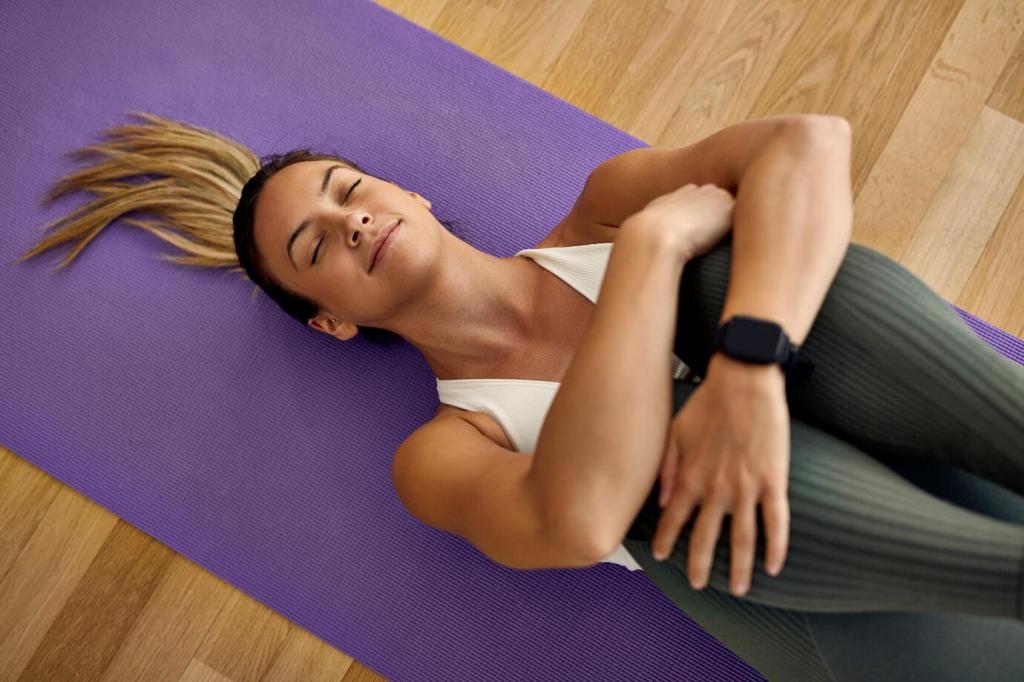
Targeted Poses for Common Hot Spots
Place your back knee on a soft pad, front foot grounded, and lift the back foot onto a block or wall if available. Keep ribs down and glutes engaged. Sixty slow seconds each side nourishes tired quads after squats or sprints without aggressive tugging.
Targeted Poses for Common Hot Spots
Sit on a folded blanket, loop a strap around your feet, and hinge gently. A micro-bend protects tender tissues while long breaths coax release. Stay curious: does ten calm breaths post-run make tomorrow’s stride feel smoother? Share your observations with the community.
Restorative and Yin: Time, Props, and Patience
Prop-Powered Comfort for Tender Tissue
Use bolsters, pillows, or folded towels under knees and along the spine to eliminate unnecessary effort. When the body feels safe, it releases. Post-leg day, try reclined bound angle with support for five minutes and tell us if that changes your next-day stiffness.
The Magic of Stillness: Two to Five Minutes
Short yin holds lubricate joints and hydrate fascia, promoting gliding between tissues. Start conservatively—two minutes—while breathing slowly. Notice subtler sensations arrive after the first minute. Consistency builds results; subscribe for weekly restorative sequences that fit inside busy training schedules.
When to Skip Deep Stretching
Severe pain, sharp twinges, or suspected strain call for rest and evaluation, not aggressive stretching. Choose gentle range of motion, breath, and supportive shapes. If you’re unsure, ask in the comments and we’ll suggest safer, feel-good alternatives for your situation.
Myofascial Care: Movement, Release, and Hydration
Link slow cat-cows, side bends, and gentle twists. This fluid, spiral movement hydrates connective tissue and reduces the crunchy feeling after hard efforts. Keep the pace conversational and explore angles. Notice any post-ride relief and drop your insights in the discussion.
Myofascial Care: Movement, Release, and Hydration
Place a tennis ball under the glutes or along the upper back near—not on—the spine. Breathe for thirty seconds per spot, moving slowly. Myofascial pressure plus breath eases hotspots that stretching alone misses. What area surprised you most? Share your discovery.
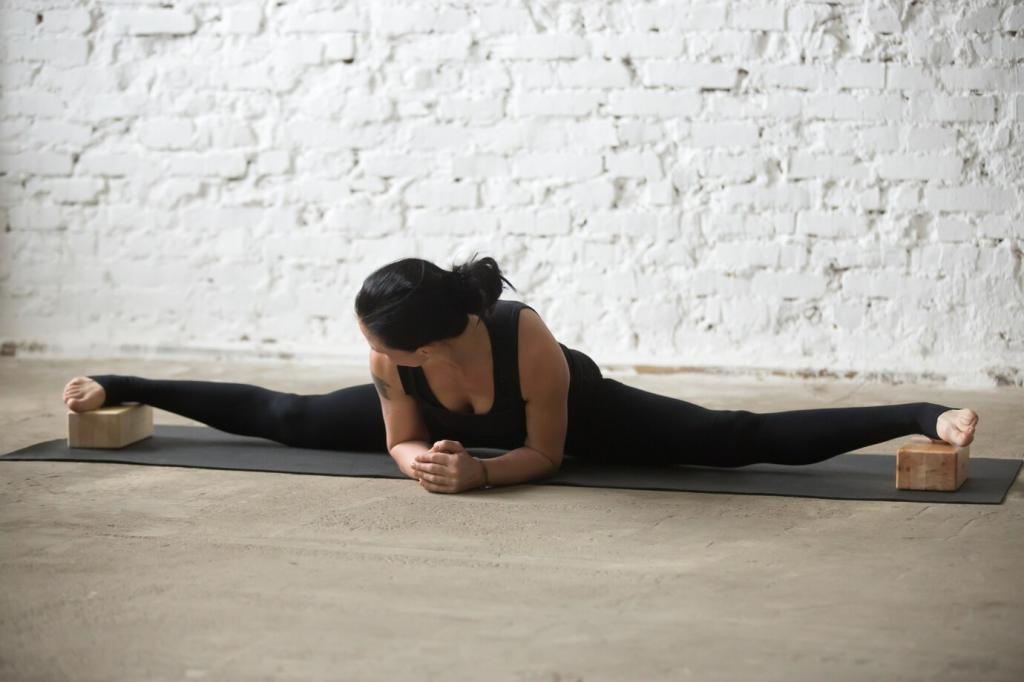
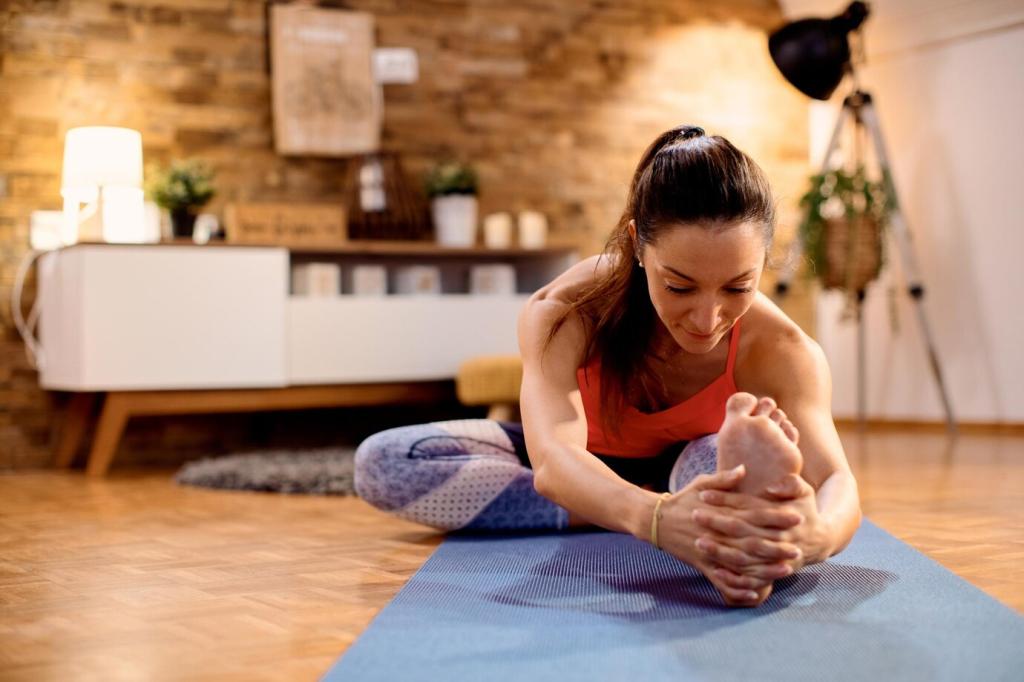
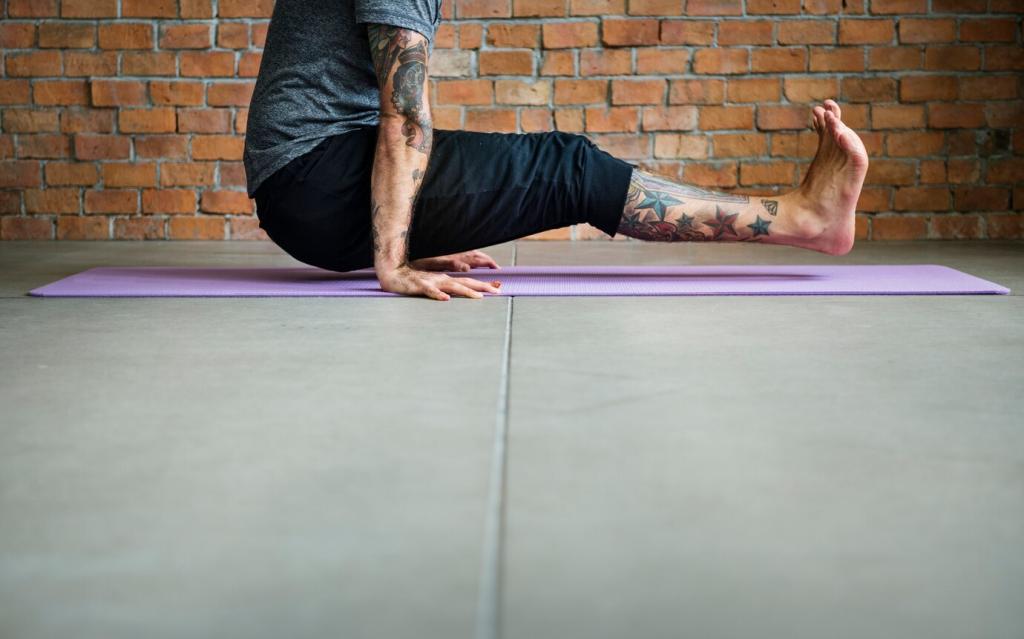
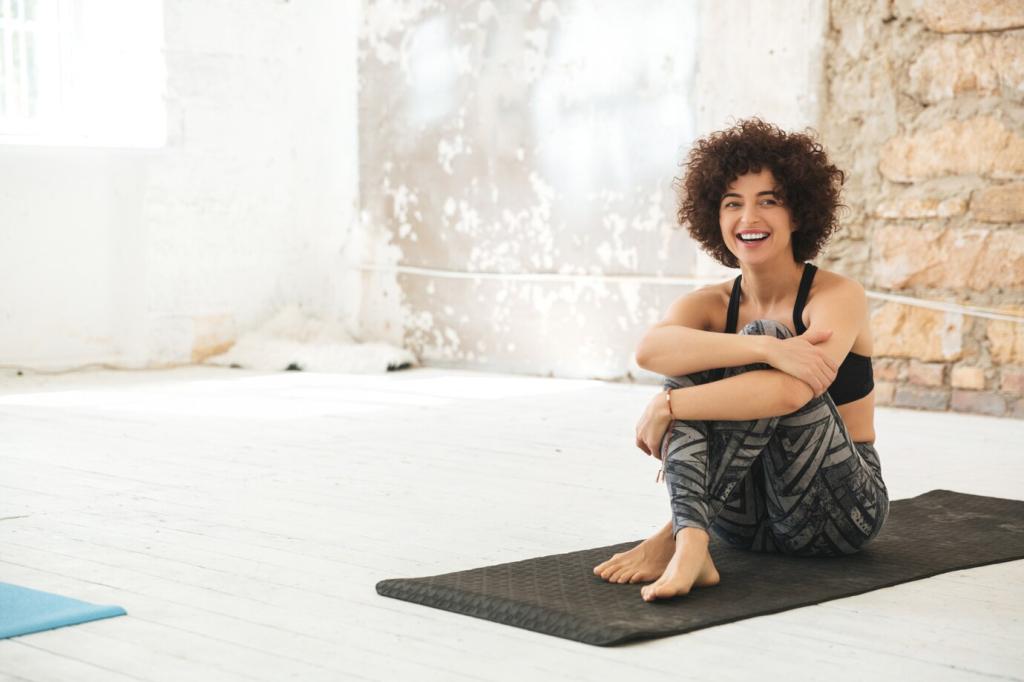
Design a 15-Minute Post-Training Yoga Cooldown
Sit tall, nasal breathe one minute, then four rounds of box breathing. Add cat-cow and gentle hip circles. By minute five, your nervous system eases and tissues warm. Screenshot this start and comment if your evening steps feel lighter after trying it.
Design a 15-Minute Post-Training Yoga Cooldown
Low lunge with glute engagement, hamstring fold with strap, and thread the needle. Thirty to sixty seconds each side, slow exhale leading the way. Keep sensation at a gentle seven out of ten maximum. Consistency beats intensity when the goal is less soreness.
Stories from the Mat: Recovery Wins
Maria added ten minutes of restorative poses after speed work—low lunge, supported fold, legs up. Two weeks later, stairs felt less punishing, and her warm-ups shortened. What tiny change could you commit to this month? Post it below so we can cheer you on.
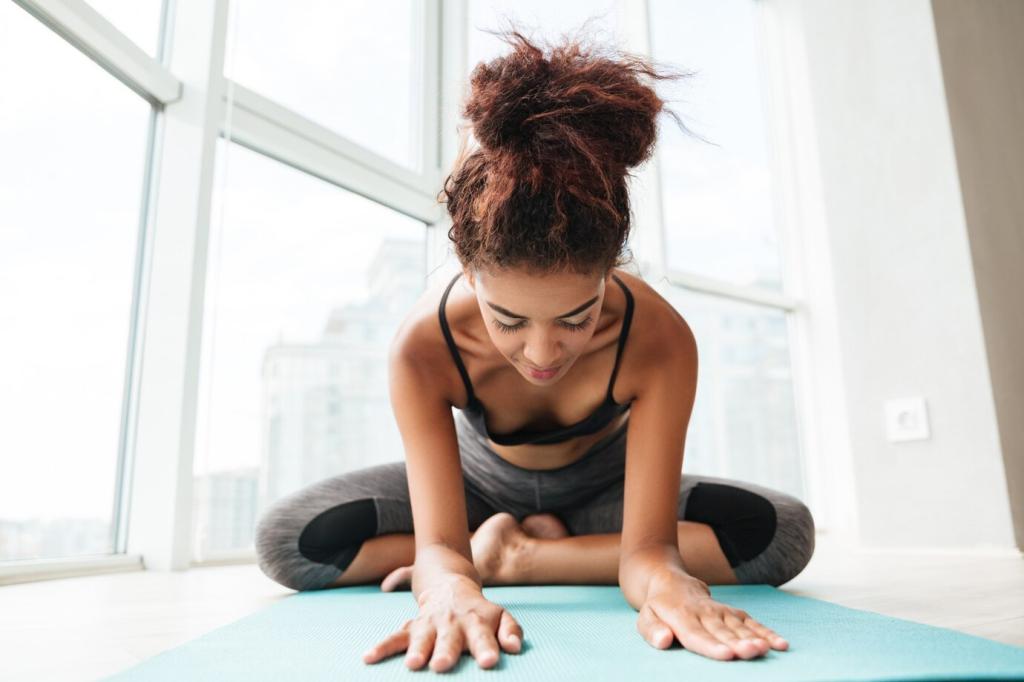
Stories from the Mat: Recovery Wins
A high school coach ended practice with four minutes of breath and two gentle stretches. Athletes reported fewer next-day aches and better sleep. Simple beats flashy. Try this with your training buddy and tell us how your next session’s first mile feels.
Build the Habit: Keep Soreness in Check
Place your mat by the door and roll into a five-minute sequence immediately after unlacing your shoes. Habit stacking removes friction and builds trust. Comment with the trigger you’ll use—shower, snack, or training log—and we’ll offer personalized tweaks.
Build the Habit: Keep Soreness in Check
Rate soreness daily, jot sleep quality, and note which poses you practiced. Patterns appear quickly, guiding smarter choices. Want a simple template? Subscribe for our printable tracker and let us know which metric most predicts your feel-good training days.
Build the Habit: Keep Soreness in Check
Share your cooldown snapshot or favorite pose in the comments. Ask questions, trade tips, and celebrate small wins. Recovery thrives in supportive spaces, and your insight might be exactly what another athlete needs to stay balanced and keep showing up.
